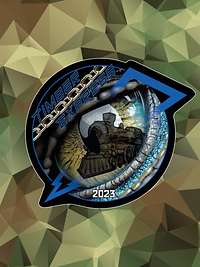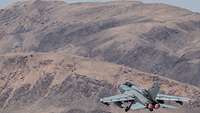
The role of data links in network-enabled operations
Technology- Date:
- Place:
- Schleswig-Holstein
- Reading time:
- 2 MIN


Network-enabled operations conducted by armed forces become more and more important in the digital world: They allow effective cooperation and coordination of various military units to respond to complex challenges in a quick and precise manner.

With their Tornados, Tactical Air Wing 51 "Immelmann" not only participates in exercises such as "Dynamic Duo 2021", but also in this year's TIMBER EXPRESS exercise
Bundeswehr/Jane SchmidtThe way of warfare has changed considerably over time. In the past, wars were mainly characterised by isolated combat actions limited to a single place. Today, modern armed forces face more complex threats that extend over several domains, such as land, air, sea, space, and cyberspace. Network-enabled operations are the answer to these challenges.
The idea behind network-enabled operations is to gain military advantages by employing information technology in a more effective and efficient manner. This is achieved by networking reconnaissance, command and control, and weapon systems and cross-service networking of land, air, sea, and cyber units. This networking overcomes previous limitations in range and increases both the pace of responses and the accuracy. Thanks to digital data transfer, information can be distributed almost without delay and loss in quality.
Military data links acting as links between the units are of central importance for this concept. Using military data links offers numerous benefits for network-enabled operations. They are used to exchange situation pictures, target acquisition data, orders, and other information. The aim is to employ military forces in the best possible manner.
Comprehensive reconnaissance and command and control are to enable the best employment of weapons. The military targets are assigned to those weapon systems that promise the greatest success under the specific conditions. This means, for example, that ground targets could be assigned to a Eurofighter or a Tornado aircraft, an armoured self-propelled howitzer, a vessel, or any other weapon system. Thanks to the data exchange via data links, the weapon system carrying out reconnaissance does not necessarily have to be the one that engages the target.
by Stephan Prietzel